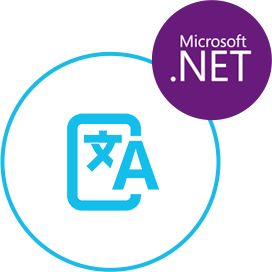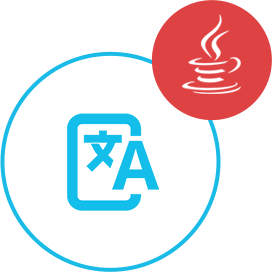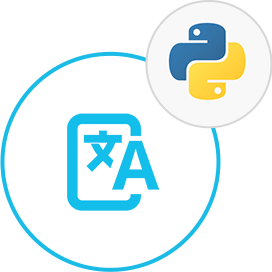Engage Your Audience with Seamless English to Lithuanian Translation on Android using GroupDocs.Translation Cloud API
GroupDocs.Translation Cloud API is a powerful and versatile tool for developers looking to integrate translation capabilities into their Android apps. With a focus on English to Lithuanian translation, this API provides reliable and accurate language translation through a simple and easy-to-use interface. Developers can seamlessly incorporate translation features into their Android applications, allowing users to quickly and efficiently translate text and documents from English to Lithuanian. This API also offers advanced customization options and support for various file formats, making it an ideal solution for implementing translation functionality on the Android platform.
// Get your App SID, App Key and Storage Name at https://dashboard.groupdocs.cloud (free registration is required).
public TextResponse TranslateText(Configuration conf)
{
string pair = "en-lt";
string text = "Engage Your Audience with Seamless English to Lithuanian Translation on Android using GroupDocs.Translation Cloud API";
TranslationApi api = new TranslationApi(conf);
TranslateTextRequest request = api.CreateTextRequest(pair, text);
TextResponse response = api.RunTranslationTextTask(request);
return response;
}# Get your App SID, App Key and Storage Name at https://dashboard.groupdocs.cloud (free registration is required).
curl -X POST "https://api.groupdocs.cloud/v1.0/translation/text" \
-H "Authorization: Bearer TOKEN" \
-H "Content-Type: application/json" \
-d '[{"pair":"en-lt", "text":"Engage Your Audience with Seamless English to Lithuanian Translation on Android using GroupDocs.Translation Cloud API"}]'
# and response
{ "status":"ok", "message":"Text translated successfully", "translation":"....." }// Get your App SID, App Key and Storage Name at https://dashboard.groupdocs.cloud (free registration is required).
import com.GroupDocs.translate.api.*;
import com.GroupDocs.translate.Configuration;
private static void setUpConfig() throws Exception {
Configuration.setAPP_SID("XXXXXXXX-XXXX-XXXX-XXXX-XXXXXXXXXXXX");
Configuration.setAPI_KEY("XXXXXXXXXXXXXXXXXXXXXXXXXXXXXXXX");
}
static String TranslateText() {
pair = "en-lt";
text = "Engage Your Audience with Seamless English to Lithuanian Translation on Android using GroupDocs.Translation Cloud API";
TextInfo textInfo = new TextInfo(pair, text);
TranslationTextRequest translationTextRequest = new TranslationTextRequest(TextInfo.toString());
TranslationTextResponse translateTextResponse = TranslationApi.TranslateText(translationTextRequest);
return translateTextResponse.translation;
}# Get your App SID, App Key and Storage Name at https://dashboard.groupdocs.cloud (free registration is required).
from groupdocstranslationcloud.configuration import Configuration
from groupdocstranslationcloud.api.translation_api import TranslationApi
from groupdocstranslationcloud.models.translate_text import TranslateText
from groupdocstranslationcloud.models.translate_document import TranslateDocument
# enter valid apiKey and appSid
configuration = Configuration(apiKey="", appSid="")
api = TranslationApi(configuration)
pair = "en-lt"
text = "Engage Your Audience with Seamless English to Lithuanian Translation on Android using GroupDocs.Translation Cloud API"
translator = TranslateText(pair, text)
response = translator.to_string()
res_text = api.post_translate_text(response)
print(res_text.translation)
Features
Translation
GroupDocs.Translation Cloud allows you to easily translate content from English to Lithuanian. With just a few API calls, you can translate text, documents, and other files into the desired language.
File Format Support
The cloud API supports a wide range of file formats, including documents, spreadsheets, presentations, and more. This allows you to translate content in various formats, such as PDF, DOCX, XLSX, PPTX, and more.
Quality and Accuracy
GroupDocs.Translation Cloud utilizes advanced translation algorithms and technologies to ensure high-quality and accurate translations. This helps to maintain the integrity and meaning of the original content during the translation process.
Simple Integration with Android
The cloud API offers easy integration with Android applications, allowing developers to seamlessly incorporate translation capabilities into their mobile apps. This enables users to translate content directly from their Android devices.
Secure and Reliable
GroupDocs.Translation Cloud prioritizes security and reliability, ensuring that your data and translations are protected. With secure transmission and storage protocols, you can trust that your translated content is safe and confidential.
Frequently Asked Questions
Is GroupDocs.Translation Cloud compatible with Android devices?
Yes, GroupDocs.Translation Cloud is compatible with Android devices. You can use the API to translate text from English to Lithuanian on your Android device.
How can I integrate GroupDocs.Translation Cloud into my Android app for English to Lithuanian translation?
You can integrate GroupDocs.Translation Cloud into your Android app by using the provided API and following the integration documentation. This will allow you to translate text from English to Lithuanian within your app.
Does GroupDocs.Translation Cloud support real-time translation on Android?
Yes, the API provided by GroupDocs.Translation Cloud supports real-time translation on Android devices. You can use it to translate text from English to Lithuanian in real time.
Are there any limitations on the size or length of the text that can be translated using GroupDocs.Translation Cloud on Android?
There may be limitations on the size or length of the text that can be translated using GroupDocs.Translation Cloud on Android, so it's best to refer to the API documentation for any specific limitations.



